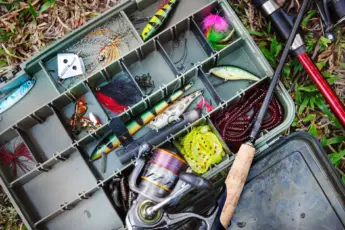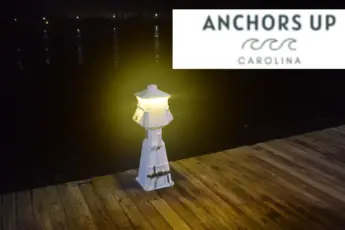Anglers fish fresh and salt bodies of water through Georgia, South Carolina, and North Carolina by boat, piers, bridges, banks, docks, beaches, and more. In all situations, rods are propped up in holders except those holding the combination by hand. Rod holders are fitted on boats, Y-shapped branches are used along the banks, and spikes are used in the sand. Here is what you need to know about a fishing sand spike.
What Is A Surf Fishing Sand Spike Rod Holder
Beach anglers avoid holding fishing rods and reels at all times while fishing to monitor multiple combinations at once. A surf fishing sand spike rod holder embeds in the sand and allows the rod butt to sit in a hollow tube. The fishing rod is held in a verticle position allowing the angler to watch the tip for a strike.
Spikes are constructed of varying materials, including PVC or aluminum. Both aluminum and PVC are corrosion resistant. Due to corrosion resistance, they are the best materials when fishing in the coastal regions of Georgia, South Carolina, and North Carolina. However, spikes are equally as effective when utilized on the beaches of fresh bodies of water.
A fishing spike is constructed at home or purchased in fishing tackle shops or on the internet. The device is highly effective and holding the rod in an elevated position above the water to monitor the tip for bites.
How Does A Sand Spike Work
Let’s first start out by the design of the rod holder intended for use in the sand. The center of the surf fishing sand spike spike is hollow, and the bottom portion is cut at an angle forming a point that aids in penetrating the beach.
A digging shovel or brute force embeds the spike into the sand when anglers arrive at the beach. The 45-degree angle at the base of the rod holder must penetrate the sand in an upright position. Drive the bottom section of the beach spike at a minimum of one foot into the sand to ensure it remains stable despite the onslaught of waves and the tug of a fish.
Ensure that the spike is stable before placing fishing rod and reel combinations in the upper portion. An unstable rod holder results in the fishing combination tipping and falling into the water or on the beach.
More frequently than not, anglers utilize multiple spikes. Spread the sand spike anchor six feet apart to reduce the likelihood of tangled lines. Once all fishing rod holders are in place and stable, distribute the fishing rods among each.
Why Are Sand Spikes Designed For The Beach
Sand spikes are designed for the beach for a multitude of reasons. Pack the spikes in a beach fishing cart to keep the gear organized. The first and most important is to elevate the fishing rods and reels to prevent them from becoming soaked by breaking waves washing onshore the beach. Reels which become soaked are prone to seizing, rendering them incapable of being used.
A second reason spikes are designed for the beach is the materials they are constructed. Aluminum and PVC are resistant to the elements, making them ideal for harsh environments and, particularly, salt exposure.
Lastly, the bottom section is cut at a 45-degree angle, allowing the spike to be easily driven deep into the sand. A blunt-ended fishing rod holder would not pass through the surface and become buried without first digging a hole, placing the spike, and backfilling.
Check out Sea Striker Sand Spikes. The beach fishing rod holders come in two sizes and are low in cost.
What Precautions Must Be Taken When Using A Sand Spike
Despite spikes being highly effective at elevating fishing rods and positioning them upright, take precautions as they are not fail-safe.
Tidal Waters
Tidal waters rise and fall through the day, influencing the height at which the water washes on the beach.
First off, never leave spikes unattended. When the tides rise, the gear is subject to becoming soaked as the seawater peaks over the top of the rod holder or sweeps it away.
Lastly, tidal water is composed of salt. After each use, wash fishing sand spikes to prevent a sticky later from accumulating on the outside.
Ensure The Spike Is Driven Well Into The Sand
Anglers have gone fishing for fishing rod and reel combinations due to improperly driving the sand spike rod holder into the sand. One of the best rod holders for holding firmly in the sand are the Over The Waves sand spikes or for short OTW.
Spikes which are not well seated in the soft substrate are prone to tipping. A tipped sand spike results in the rods and reels taking a bath. Ensure the rod holders are stable.
Fishing Sand Spikes Are Valuable To Beach Anglers
Save yourself of the trouble of holding a fishing combination in your hand while perched on the beach. Instead, drive one or more spikes into the sand, sit back, and monitor the tips for bites. The spikes allow you to take in the sights of the natural area, including birds, marine life, and, of course, people.






